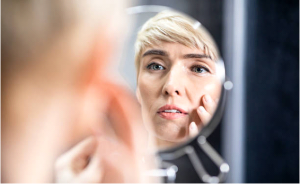Journaling to Help with Stress
Dear Daughters, Journaling to Help with Stress is a great idea. It can help you process your thoughts and feelings, and it can provide


Aging is one of the oldest concerns of the human being. We age because the macromolecules that make up our body lose their function over time. Aging begins when the body’s cells repair is less than the damage they suffer over time. This process occurs at different times in each person, and its progress is unstoppable, but its effects can be reduced by following a healthy diet and active lifestyle. Knowing its signs and causes helps us understand it better and delay it.

This is usually the first sign of aging, and is the most noticeable at first glance. The skin loses its elasticity in some areas. Over time, the wrinkles will spread to other body areas.

Over the years, reflex reactions slow down, and this is compounded by the loss of agility. Which can mean it takes more effort to practice sports or basic tasks.

Alzheimer’s can be diagnosed up to 20 years before its most serious phase. Such manifestations can be short-term memory loss or disorientation episodes, and are often attributed to stress.

With the passage of time, it is easier to catch contagious diseases, like the flu. In our youth, we have greater immune capacity and can protect ourselves from these viruses, but this capacity is reduced with increasing age.

Another well-known sign of aging is hearing loss, which is associated with progressive loss of senses. .

The pore is the opening through which the growing hair comes out. Each hair has an oil gland that produces the sebum that the skin needs to be lubricated. After age 40, pores become more visible on the face, which can have an aesthetic impact on women.

Dark spots appear on the skin due to sun exposure. What is known as photoaging.

The skin becomes dehydrated, dry and rough. The softness of the skin directly correlates with the presence of water. To protect the skin from water loss, the sebaceous glands produce an oily substance called sebum. Over the years, its production decreases, and this, added to environmental conditions, causes the skin to lose water and become drier and tighter.
So daughters, life expectancy has increased significantly in the last century. This is partly due to some medical advances, and we are taking better care of ourselves. Age brings new experiences, and our skin and bodies sometimes reflect that. It’s about prevention and giving your cells a boost through products or lifestyle changes when it comes to slowing down the indications you don’t like. I hope this helps.
As Always,
Love Mom
Dear Daughters, Journaling to Help with Stress is a great idea. It can help you process your thoughts and feelings, and it can provide
Dear Daughters, Journaling can be a helpful way to reflect on your day, process and organize your thoughts, and connect with yourself and others. Many
Dear Daughters, Journals are a great way to keep track of your thoughts, ideas, and observations. You can use different types of journals to document
Subscribe to my weekly newsletter!